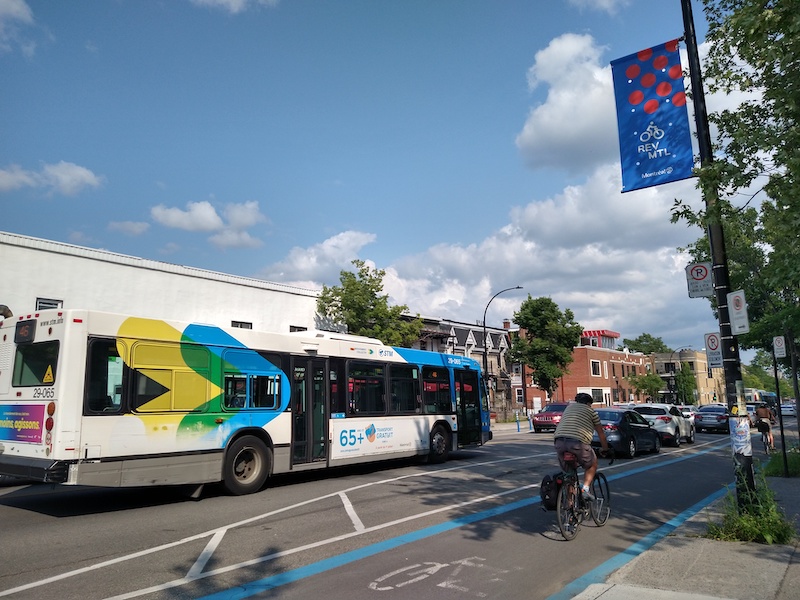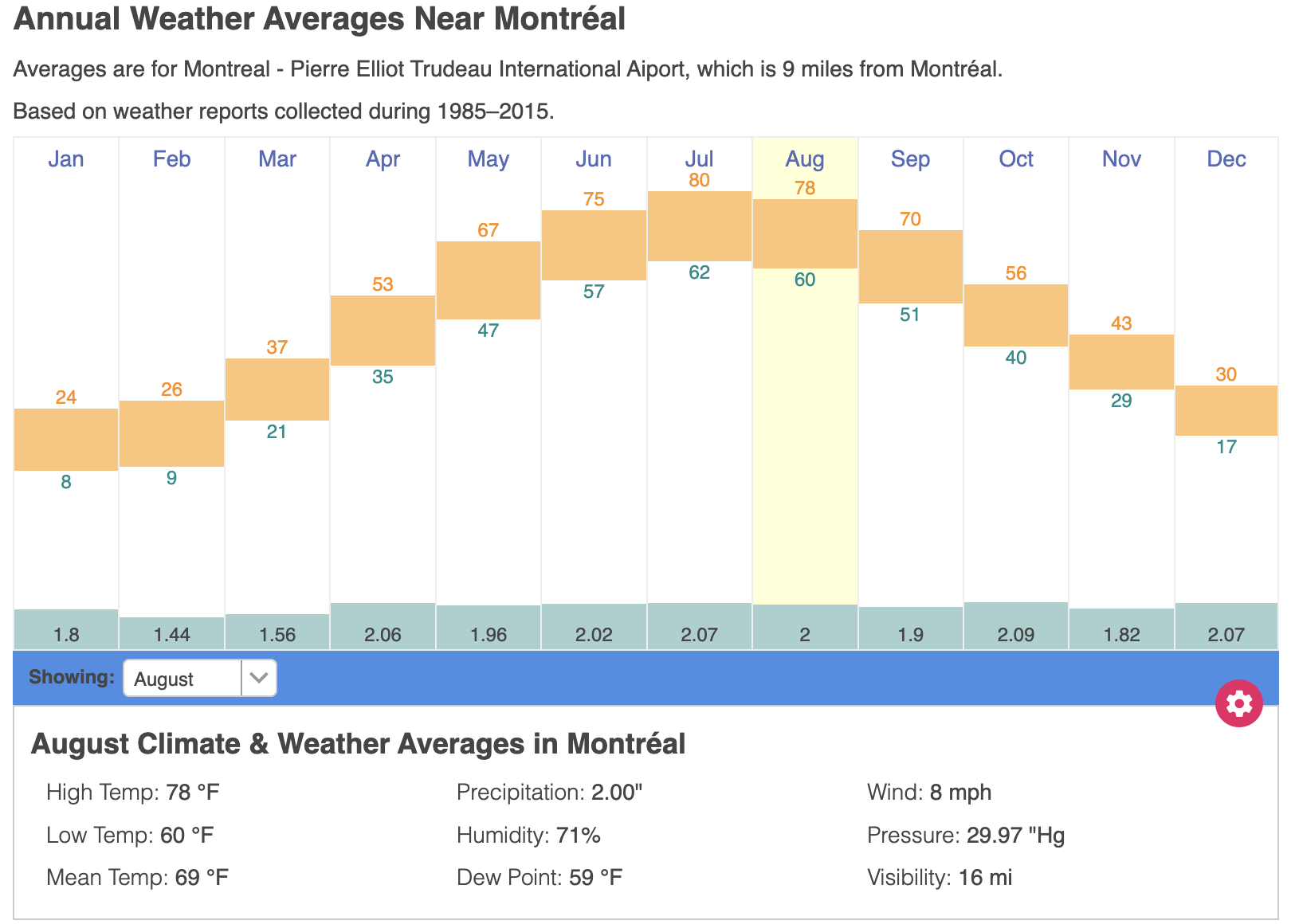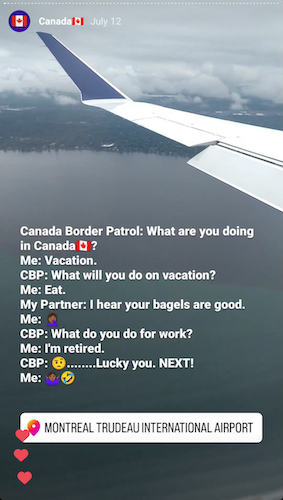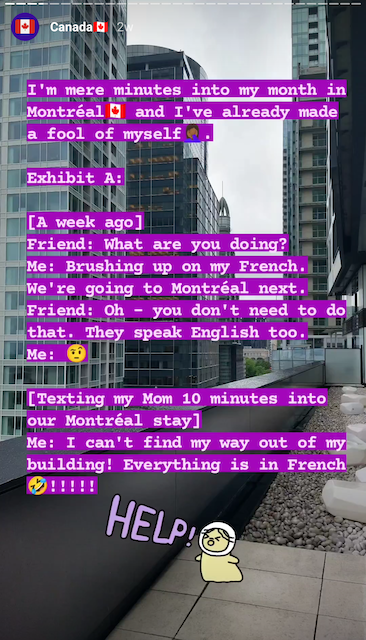From the moment we touched down in Montréal, I was in love. Why, you ask? It only took 20 minutes from the moment I set foot in the airport to when I stepped onto the curb to be picked up – and most of that was walking, not waiting. That definitely puts Montréal in the top 3 for the efficient international air travel arrival that I’ve experienced.
YUL Airport
In case you’re making the same trek, here are a few things to know. When you reach Border Control, everyone joins one line – there’s no separation for Canadian citizens. Once you get to the front of the line, there are a million machines to choose from. The ones that are free and available are green at the top.
Head towards one of those, follow the instructions, step back if it’s refusing to take your picture because you might be too close 😉 , and then head to the other line to talk to a Border Agent. Once they clear you, head to the right towards signs for Baggage Claim or the Exit. Do not join the line for Immigration because that’s for actually immigrating to become a Canadian citizen, not immigrating to visit (ask me how I know 🙂 ).
Once you grab your bags (if you checked anything), head to the exit and you’re free! And that’s how YUL airport climbed into my top 3. I was very impressed by their speed – and also this humorous interaction:
Walkability
Now let’s get into part of my regularly scheduled programming within these Slow Travel Reviews. Shockingly, I don’t usually take entire paragraphs to praise their airport processes 🙂 .
Montréal is wildly walkable no matter where you are in the city. I saw sidewalks, crosswalks and pedestrian walk signals everywhere I went. Drivers also generally seemed to be paying attention to the road instead of their smartphones, which gave me some hope for the world 🙂 .
In fact, Montréal is so walkable that I used public transit ONCE the entire month I was visiting. Otherwise I walked. And technically, I used public transit 0.5 times because the train stopped halfway through my trip and after waiting a while, we just walked home 🙂 . I’ll get more into that experience in the Transit section below.
On another note, the city is also shockingly clean. I saw people cleaning constantly in city uniforms and went an entire 3 weeks without ever smelling something ‘interesting’ – aka the smell all of NYC is made of 🙂 .
Transit
I used a regional train from Ottawa to Montréal and had an sensational time (detailed in the below post), which made me want to take this same train across the whole country (I hear the views are sensational).
As for the local subway and bus system, as I mentioned, I only used the Montréal public transit system once during this trip. However, it was a staple when I visited in the past and wasn’t staying in the heart of downtown.

I was happy to see that what I loved about the subway in the past is still true: It’s clean and (generally 😉 ) efficient with opportunities to buy tickets at every station (unlike in other cities I’ve been in lately – I’m looking at you Chicago).
If you’re staying for a while, Montréal has an OPUS card that you can purchase for $6 CAD ($4.47 USD) that you can load up with money so you don’t have to use the paper tickets. That’s what I did the last two times I visited and was using the subway daily.
However, if you’re just looking for a quick trip, you can use one of the large machines at a subway stop (the small ones are to only refill OPUS cards) to purchase the number of rides you need. One ticket costs $3.75 CAD ($2.79 USD).
To use this card and enter the subway, you insert it into the turnstile with the red lines facing up, remove it on the other end and then walk through. Then head to the side of the station that you need, which is indicated with the name of the last stop of the line.

And if there’s anywhere that’s less convenient to get to, ride shares are abundantly available. We took an Uber to and from the airport and I hear that there are local alternative companies you can use as well.
Inclusivity
I think Montréal might be the most diverse feeling city I’ve visited on my nomad travels. Technically the city has the below panethnic demographics, but what made me feel this way was that all different types of people seem to live and work together.
- 60.3% European
- 11.5% African
- 9.3% Middle Eastern
- 4.6% South Asian
- 4.5% Latin American
- 3.8% Southeast Asian
- 3.8% East Asian
- 0.9% Indigenous
- 1.3% Other/Multiracial
They aren’t separated like I saw in Chicago for example. Walking down the street was like seeing a kaleidoscope of colors intermingling and I didn’t stand out at all, which was a nice change 🙂 . I felt completely safe walking and running by myself, even at night and that was an amazing feeling.
Language
My opinion on if you need to know French before coming to Montréal has evolved over time 🙂 . For example:
In case you’re in a similar situation (trying to find your way out of a giant high rise in French) – just a heads up that to get to the ground floor you need to hit “RC,” which stands for “rez-de-chaussée” aka “ground floor.” Another good one to know is “SS” which stands for “sous-sol” aka basement.
After some research, I discovered that during my previous two visits to Montréal I stayed in mostly anglophone areas (indicated by the red below while blue indicates francophone areas):

After this new experience I would recommend studying some French before visiting Montréal. I took 7 years of French and I was struggling myself 🙂 . A lot of people do speak English and are very accommodating, but I personally always felt bad when my high school French failed me and we had trouble communicating.
However, a lot of shop owners I encountered in more touristy areas say the greeting “Bonjour-hi!” like it’s one word and depending on how you respond they continue in that language. Very impressive!
Overall though, coming to Montréal without knowing any French just got harder. They passed an amendment to La Loi 96 in June 2022, which did a lot of things, among them requiring businesses to have predominately French signage across Québec and announcing that the main language is French, not French and English as it had been.
This also has implications for how you can contact the government – which is now basically only in French even if you’re trying to immigrate and learn the language. All that to say, it’s going to be more difficult getting around this province while not knowing any English if these laws remain. So let’s get our studying on!
One section of French that I should have studied WAY more is the words surrounding money – tipping specifically. I’ll get into Canadian money situations below, but generally you are given a device to finish a credit card transaction and of course it’s in French 🙂 . So under social duress (I joke 😉 ) you have to input the tip and finish the transaction. Here are some words I wish I knew to do that:
Pourboire = tip
Autre = other
Annuler = cancel
Payer = pay
En cours = in progress
Other helpful things I wish I knew beforehand include:
Commandez ici = order here
Recevez ici = pick up here
Nous montons = We are going up (in an elevator)
Nous descendons = We are going down (in an elevator)
Money
The current currency exchange rate is one reason the city felt affordable to me. 1 CAD = 0.75 USD so basically if your main currency is USD, subtract 1/4 or 25% from a price to know what it is. An instant discount 😉 .
Before we arrived I was curious if I needed to have cash in Montréal and in 99% of cases the answer was no. The only place I used cash in the first few weeks was to give a $3 admission fee to this Street Food Festival:
However hilariously, once inside, no one accepted cash 🙂 . So I found myself with an abundance of cash and no place to spend it (I know – woe is me 😉 ). Luckily I found one part of the city that didn’t have credit card devices with tap enabled like most places: the Mile End neighborhood.
When I visited, there were many shops that only took cash or debit, which is fair enough. I was just glad I had my accidental abundance of cash to cover everything.
Overall though everywhere has small card readers, even restaurants, which I loved. They come around to each table with it so you can use your card right there instead of them taking your credit card and coming back to the table with a receipt you need to sign. Such efficiency! The US needs to get onboard.
Conversions
First, the most important conversion in our internet addicted world: Electricity 🙂 . Canada has the same sockets and voltage as the US so if you’re coming from there, all your cables are good to go without a converter.
Another helpful conversion is distance which I found a quick need to learn because of my runs and the fact that the treadmills at the gym were understandably in French and using metric. My Partner mentioned to me that after a point, you can use Fibonacci numbers to convert easily from miles to kilometers. Fibonacci is an infinite series of numbers where each number is the sum of the last two: 1 1 2 3 5 8 13 21 34 55. So, for example, 3 miles is 5km, which is the next number in the sequence, and 8 miles are equal to 13km. Nice!
Another fun trick I learned is how to convert temperature. To approximately convert from Celsius to Fahrenheit you can use this equation, which is simple to do in your head:
C x 2 + 30 = F
So for example 40C is 104F, but this gets you pretty close:
40C x 2= 80 + 30 = 110F
I ended up using these calculations on our thermostat, but also in an unexpected place: the shower! I’m not sure how standard this is across Montréal, but our shower dial had temperatures on it. It also had a large red button that we couldn’t determine the reason for 🙂 . It turns out that red button is a child safety thing and you have to push it down while turning the temperature dial for it to change. The more you know!
Nature
The amount of natural space in Montréal is lovely. It helps that at the center of the city is a giant mountain and park, but overall I couldn’t go a few blocks without seeing a park or other beautiful green space complete with fountains, statues and comfortable benches.
The entire city is also an island so it’s surrounded by water, which also helps with the feeling of nature even though you’re in a major city.
Climate
I visited in July and the weather was perfect. Sunny, warm and not very humid. There were a few thunderstorms, which were fun to see, but it rarely rained. I got a surprising amount of pool time, which I wasn’t expecting 🙂 .

Food
The food in Montréal was almost too delicious 🙂 . It was also wildly diverse, which I loved. There were twists on even staples like Poutine that made them even better:
If you’re looking for a less interesting take though, I was entertained to see that every American fast food restaurant in Montréal seemed to carry poutine – McDonalds included. Now that’s a unique experience 😉 .
Montréal is also known for their unique type of bagel, which I sampled many of and greatly enjoyed:
Cost
I like to base estimates on solid facts and that’s why I began my retirement calculations by assuming I would continue spending the same amount that I did during my awesome HCOL life in Seattle, which cost $18,000 a year. I then added 11% on top of that amount just in case, to come to a round $20,000 for my annual retirement budget.
But how did Montréal stack up?

In a word: wonderfully 🙂 . In fact, I’m going to do my usual summary of major costs below, but in a separate post on my Insta I list absolutely everything I spent while in the city, which was surprisingly little – especially when compared to all I ate and did so look out for that soon.
Lodging
Cost: $1,315.09/month per person
This says it all:
Food
Grocery Cost: $182.84/month
I did most of my grocery shopping at Provigo, which is a more expansive choice (kind of Whole Foods-esque) and even with that I didn’t break the bank. For a more economical option I checked out Metro and IGA, but chose convenience over cost 99% of the time. Oops 🙂 .
One interesting thing to note is that in Québec, grocery stores have some signs listed in lbs and some in kgs so make sure you’re calculating correctly before you get a surprise at the register. Another heads up is if you’re interested in fresh bakery items. At the stores I went to there were little bags and pencils next to the pastries and you need to write the associated # on the bag and if you’re doing self-checkout you then enter the number like you would for an apple or something.
Eating Out Cost: $276.81/month
All my money basically went to restaurants and food vendors and I have no regrets about that 🙂 .There are still so many shops I want to visit. Next time!
Alcohol Cost: $78.27/month
There was a shocking abundance of delicious beer, wine and cocktails in Québec. I semi-jokingly said that I need to come back just to visit the various breweries because the flavors were always wild (my favorite) and very delicious. I had no idea this province had so many unique options and I’m excited to explore them more when I return.
Transit
Cost: $32.91/month
This is not surprising to me 🙂 . I walked all over the city and this just includes the ride share I took to and from the airport as well as one subway ticket. We paid a little extra to stay in the heart of the city, but it definitely reduced our transit costs compared to previous trips.
Entertainment
Cost: $20.16/month
This just includes admission to that street food festival, two Discount Tuesday movie tickets (including the below) and renting The Super Mario Movie so we can talk to our niblings about it.
Overall though I was shocked at the amount of free entertainment available every day in the city. It seemed like I couldn’t walk around without stumbling onto one and it was absolutely awesome:
Conclusion
And that was my experience living in Montréal, Canada for a month! If the gushing didn’t tip you off, I loved it 🙂 . So much in fact that my Partner and I are discussing adding it as the only city we visit annually. We’ll see if that comes to fruition since there are so many amazing places in the world to see, but since I barely made a dent in all I wanted to do this year, coming back for more time next year sounds like a great idea to me 🙂 . Until next time!
Have you ever felt instantly comfortable in a new country?
If you’re interested in my other Slow Travel Reviews, they’re all here:
- Slow Travel Review: Portland, Maine, USA – The Land Of Deliciousness
- Slow Travel Review: Catskill, New York, USA – The Land Of Mountains
- Slow Travel Review: Santa Fe, New Mexico, USA – The Land Of Chili Peppers
- Slow Travel Review: Decatur, Georgia, USA – The Land Of Flowers And Food
- Slow Travel Review: Phuket, Thailand – The Land Of Sea & Food
- Slow Travel Review: Mérida, México – The Land Of Color & Nature
- Slow Travel Review: Seattle, WA, USA – The Land Of Flowers, Sea And Mountains
- Slow Travel Review: Buenos Aires, Argentina: The Land Of Nature & Architecture
- Slow Travel Review: Sacramento, CA, USA: The Land Of Flowers & Sunshine
- Slow Travel Review: Chicago, IL, USA: The Land Of Pizza & Waterways




Montreal has been on my to-visit list for years and this write-up makes me want to go even more! Poutine is so, so good (and fun fact: a certain Russian politician’s name is spelled “Poutine” in French-speaking media, which is unfortunate given how delicious the food is) and the other food pics you shared look incredible. I want to goooo omggggg.
Quebecois French is a unique beast in the French-speaking world. I’ve been (kind of, sort of) learning French, and the minor differences between Belgium, France (and Marseilles), Luxembourg, and Switzerland cause enough hilarity here without the wild west that is Quebec in the mix XD written looks very similar, but “Bonjour-hi”? That’s awesome. (Side note: swearing is on a whole other level in Quebecois, I’m actually in awe.) Sounds like you managed really well!
Haha happy to help! And I didn’t know that fact – thank you for sharing. And good to know about Quebecois French – I’ve heard that a few times and will happily fall back on that reason for me having trouble visiting with my France French lol. Cool on swearing! I’ll have to learn that next time 😉 .
Quebec French is actually pretty unspoiled compared to most modern day French-speaking countries. Just wait until you learn about Acadians who speak Chiac and Cajuns in Louisiana who are currently reclaiming their Acadian heritage with a LA twist via language as well.
https://www.bbc.com/travel/article/20220829-the-royal-roots-of-quebecs-french
As a person who came from a Franco-Canadian family, I find it so odd how obsessed Americans are with the “purity” of the French language. More than once has a person in my travels tried to school me with their high school french not understanding that just because they don’t know the accent, that a dialect or different terminologies are not mistakes. You would think that Americans with their multitudes of accents and regionalisms that don’t, say, “fit” with what we’d call “The Queen’s English” would be more accepting, but not always. Like any travel-related language experience: it will take awhile to adjust but once you do, you will be fine. Most people are very patient with new language learners and I have never had a problem having conversations in France or with people from Haiti or Africa (which also have their own dialects). I find it notable that the comment above only discusses European countries, when so many non-Euro countries are French speakers.
Fun fact: Jack Kerouac didn’t speak English until he was 5.
Oh wow! All good to know – thank you 🙂 .
I spoke to my experience, as you speak to yours. No need to take it so personally.
Yas! An annual hangout sounds wonderful :D!!! So glad you enjoyed it lady and looking forward to your next visit already.
Yeah I’m looking forward to it too 🙂 . See you then!
Pardon my lateness, I’m just catching up on a few of your posts. I really enjoyed this recap! All parts were very reminiscent of my September ’22 trip, aside from the airport experience & choice of bagel establishment (I went with St. Viateurs but Kettleman’s sounds just as great). I lived in upstate NY at the time so I drove up through awesome fall foliage & brought my bike along to get around the city, tour Old Montreal, & some of the islands & bridges. I also really loved the “bonjour-hi” & spent mm.. maybe a week beforehand doing some intro French lessons on duolingo but didn’t need to use any of it because of this. I’ll definitely be returning, hopefully having learned a bit more French in the meantime if I can pull myself away from my 1000+ day streak in Spanish ;). Thanks for sharing & reinforcing Montreal’s immaculate vibes, Purple!
I’m so glad you enjoyed it 🙂 ! And ooh driving up in the fall sounds wonderful. A 1,000 day streak in Spanish is wild – congratulations! I definitely need to brush up more on my French before my next Montréal trip. Thanks for reading 🙂 .